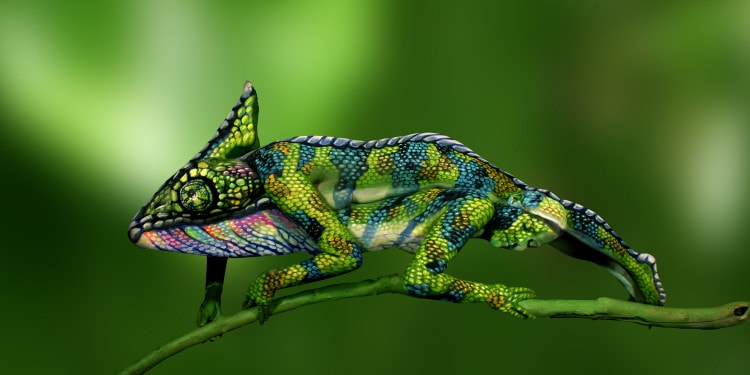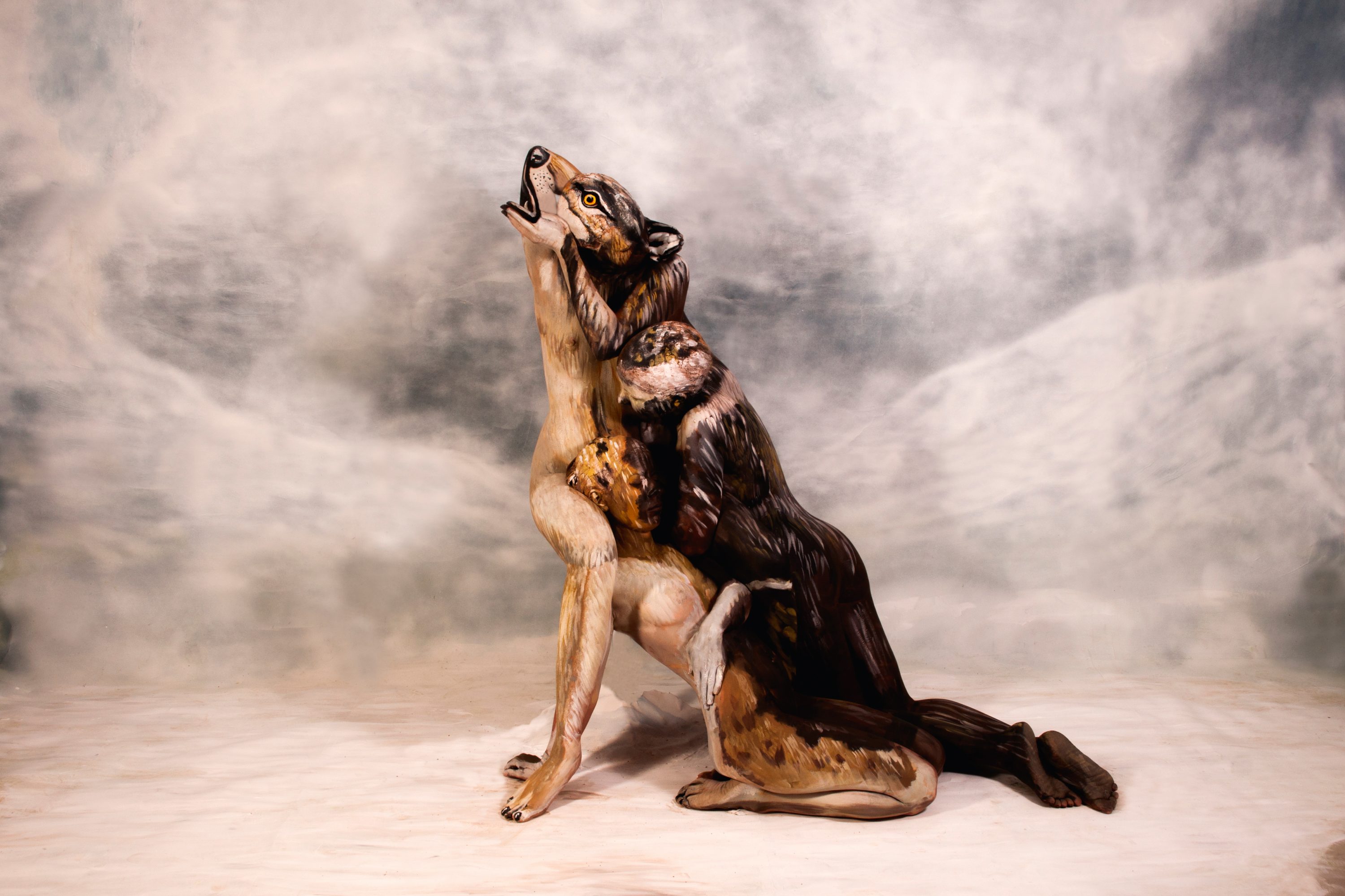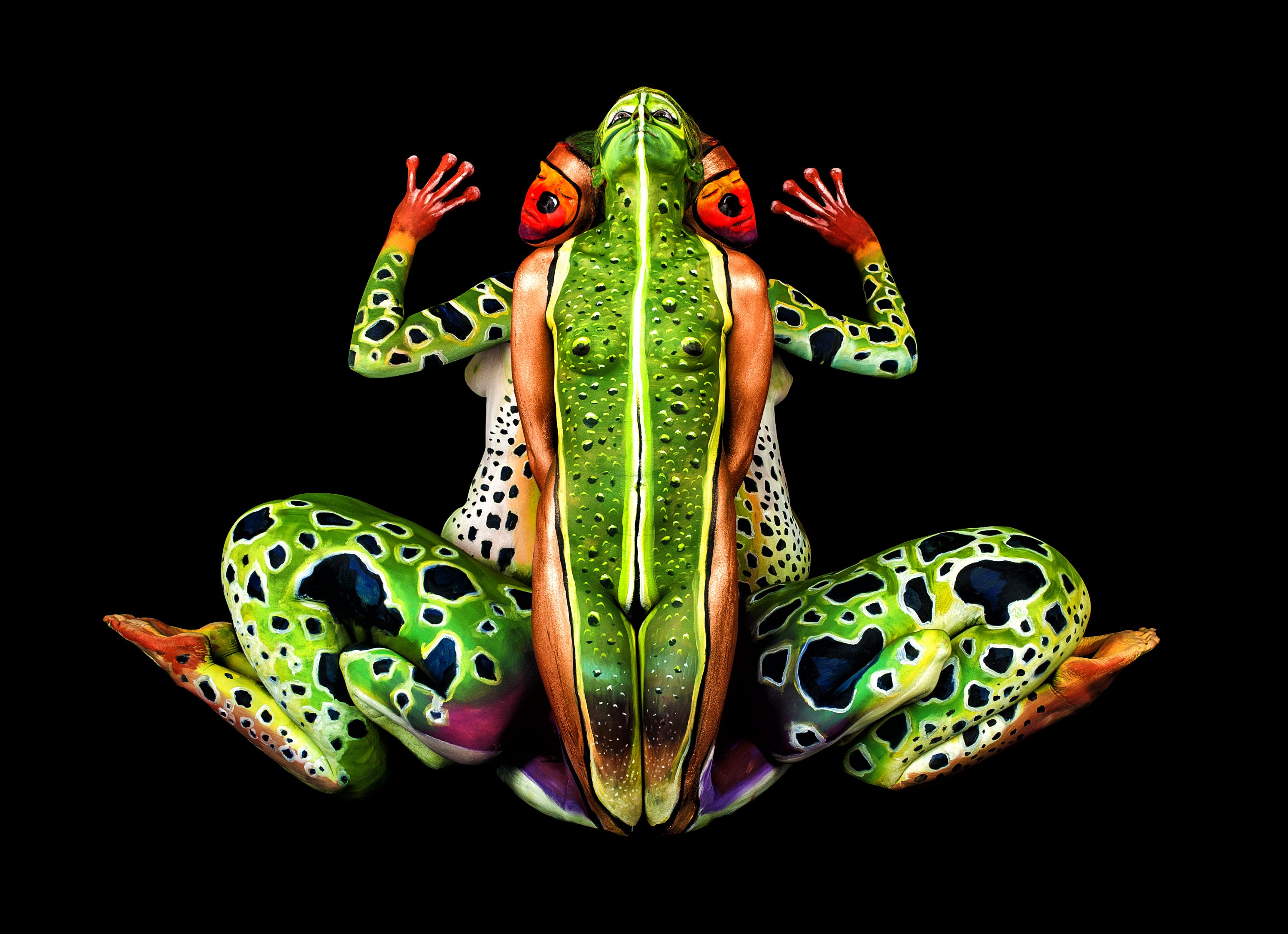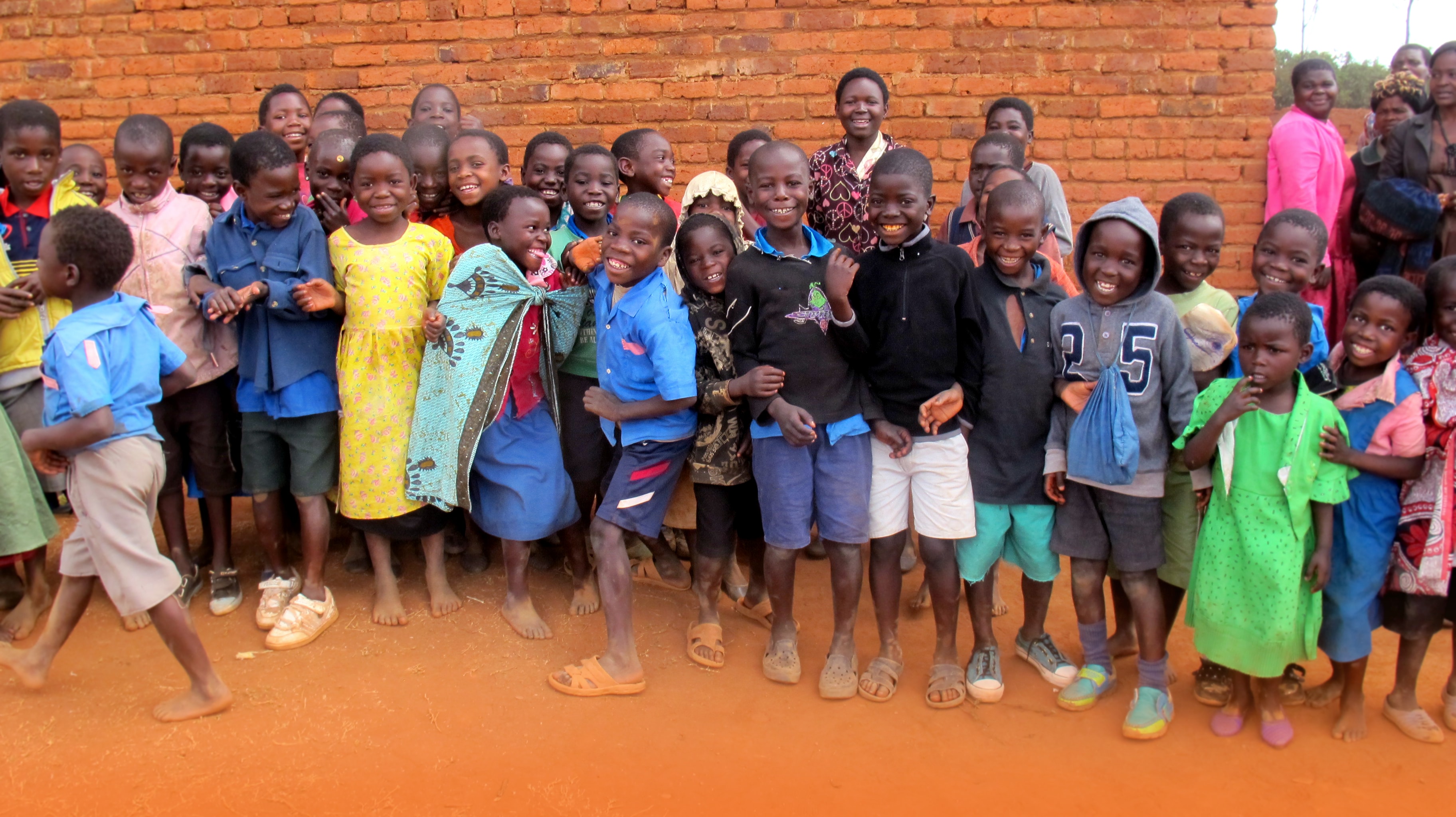When you see his work, don’t let your eyes decide what they are seeing too quickly. Italian-born artist Johannes Stötter has developed his master skills through intricate optical illusions. His impeccable renderings of animals and nature’s motifs on human bodies highlights the versatility of the human form in ways never seen before.
We had a chance to speak to Stötter and get a glimpse of the mind behind these extraordinary images.
Tell us a bit about yourself — how did you find your path as an artist?
Johannes Stötter: I started drawing already as a small child, and soon it was very clear that I wish to become an artist. As a teenager I started painting on canvas, first with acrylic colors, later with oil colors. Also I started learning how to play the violin at the age of 7 — later I became a musician and started a band.
How did you discover the idea of using the human body as a medium for your art?
J.S: The idea to paint on a human body came to me kind of coincidently, without any inspiration from outside such as photos, films, or other connections. I did not even know that this art form existed, I just thought that it would be interesting to paint on a human body. After I tried it the first time I had the feeling that I wanted to discover this art form more deeply.
 Photo Credit: Johannes Stötter, WB-Production
Photo Credit: Johannes Stötter, WB-Production
What is the typical duration of one project?
J.S: It depends on the motif, there are ones I can do in one hour, others take more time. The longest one so far was the wolf which took 8 hours including breaks, photo shooting and some work on the position. Alongside this, there are projects which need to be prepared in advance. The duration of the preparation depends on the motif — it can either take a few hours, a few days or even a few weeks.
I did not even know that this art form existed, I just thought that it would be interesting to paint on a human body. After I tried it the first time I had the feeling that I wanted to discover this art form more deeply.
Photo Credit: The Wolf, Johannes Stötter, WB-Production
How do you trace the steps from the idea in your mind to the finished piece?
J.S: Depending on the motif, the process changes. For example, with camouflage bodypainting (blending a body into a background), I just need an interesting background. I don’t need to find an idea or do any preparations. If we take for example the illusion bodypaintings (frog, chameleon, wolf…), the first step is to find out how to position one or more models to make them imitate the shape of an animal. When I have a first sketch I check the position with the models to find out if it is physically possible. Then I make a bigger sketch adding colors and structure the position of the animal against a specific background. After that I have to paint the real background which is sometimes quite big. The final step is the bodypainting and photo shooting.
Related articles: “CROCHETED ART WITH OLEK”
“ZARIA FORMAN – VISUAL AWARENESS”
Photo Credit: The Frog, Johannes Stötter, WB-Production
What part do you find most challenging?
J.S: I find it most challenging to concentrate on many aspects at the same time while doing an illusion bodypainting, to paint it well and realistic, to tell the models how to move to get into the right position, to be in the right angle myself and of course also to find the idea, to find an animal position with only bodies without adding or canceling something.
I think the ephemeral quality of bodypainting makes us more aware, for example about letting things go.
 PHOTO CREDIT: THE ANGELFISH, JOHANNES STÖTTER, WB-PRODUCTION
PHOTO CREDIT: THE ANGELFISH, JOHANNES STÖTTER, WB-PRODUCTION
What message do you want to give out with your art regarding animal conservation and habitat preservation?
J.S: One message could be: Things are not what they seem to be. Also the deep connection between humans and animals or generally between humans and nature is a strong message.
For a full mindmap containing additional related articles and photos, visit #bodypainting
What projects are you currently working on?
J.S: I have more sketches for illusion bodypaintings and try step by step to work on them and finally bring them to reality.
What do you think the ephemeral quality of bodypainting gives to the dynamic of your work?
J.S: I think the ephemeral quality of bodypainting makes us more aware, for example about letting things go. Also it makes us perceive the art more intensively.
 PHOTO CREDIT: THE PARROT, JOHANNES STÖTTER, WB-PRODUCTION
PHOTO CREDIT: THE PARROT, JOHANNES STÖTTER, WB-PRODUCTION
https://www.youtube.com/watch?v=dI3VXY_4Zdc
VIDEO CREDIT: NEW YORK MAGAZINE
To learn more about Johannes Stötter take a look at his Website and follow him on Facebook.
—
Recommended reading: “THIS IS NOT A PARROT”
EDITOR’S NOTE: The opinions expressed here by Impakter.com columnists are their own, not those of Impakter.com.
















